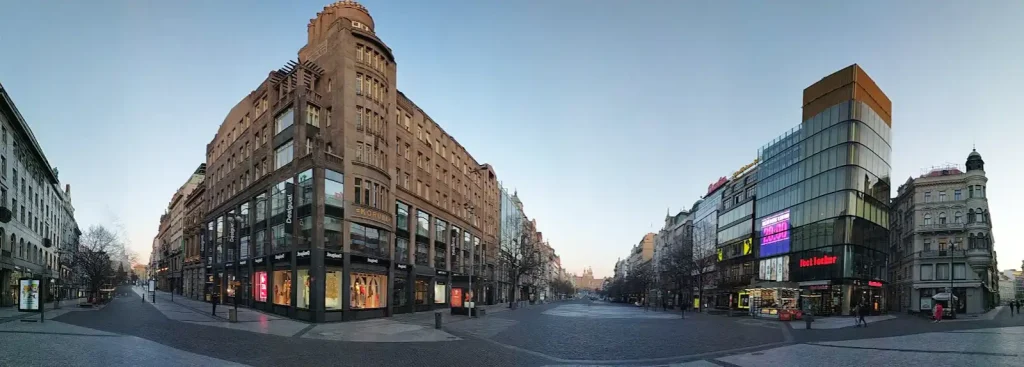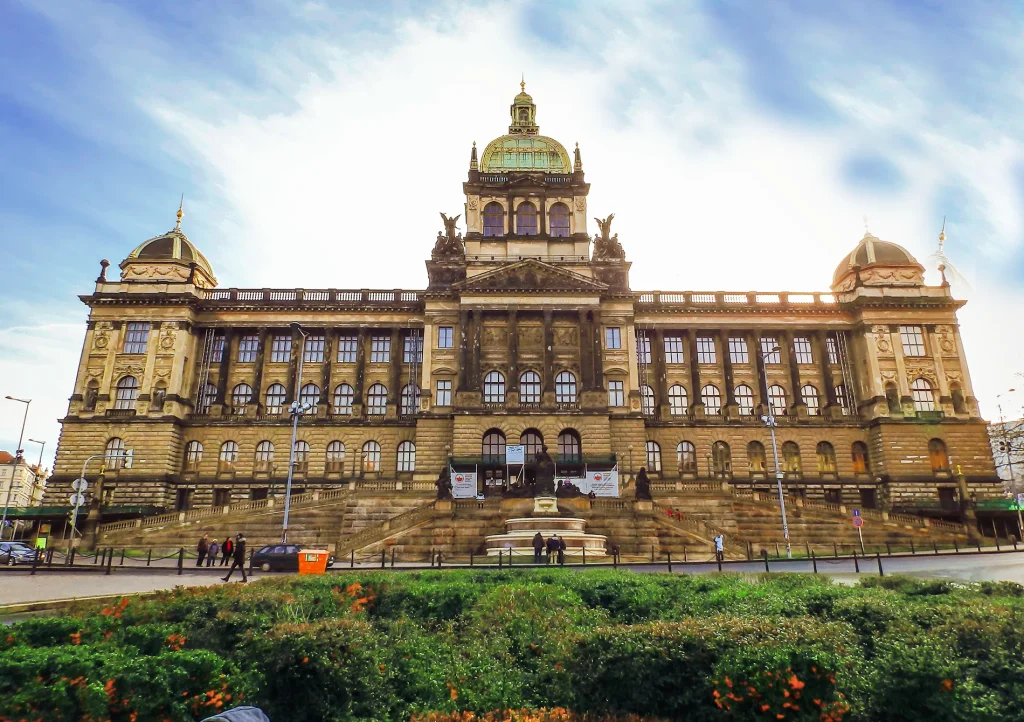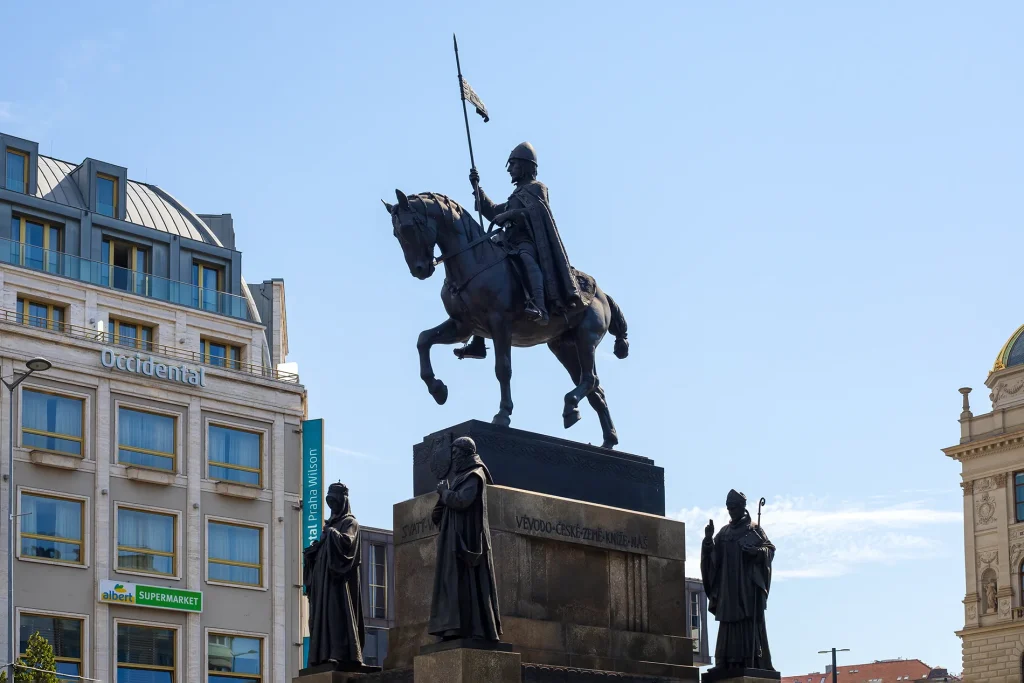In the vibrant core of New Town (Nové Městо), established by Charles IV in 1348, lies Wenceslas Square, an imposing tapestry of history and modernity. Stretching an impressive 750 meters in length, this grand boulevard narrows from 63 meters at its top to 48 meters at the base. Its early days saw a sprawl of craftsmen’s homes, malt houses, and breweries, conjuring images of artisanal Prague. Once known as the Horse Market (Koňský trh), the square was the epicenter of medieval horse fairs and bustling agrarian trade.
Tips for Visiting
“Na Můstku”, the square’s lower end, tells tales of a pond powered mill and a central well frequented by townsfolk. Time added three fountains, further enhancing the square’s charm.
Established
1348
TOTAL AREA
45 000 sq. m2 (11.12 Acre)
LENGTH
750 m (820 yards)
WIDTH
48 – 63 m (157 – 207 feets)
The statue of Czechia’s patron, Jan Nepomucký, once stood as a beacon for pivotal gatherings. It was during one of these meetings, in 1848, that Karel Havlíček Borovský suggested renaming the square to Svatováclavský.
By the 1890s, the National Museum (Národní museum) crowned the square. Though initially devoid of greenery, today, over 150 resilient silver or fluffy linden trees punctuate the space.
Named in homage to Saint Wenceslas, Czechia’s guardian, his monument proudly presides at the square’s head, near the National Museum. Erected between 1912 and 1913, this masterpiece by sculptor Josef Václav Myslbek has borne witness to the nation’s modern history, from triumphs to tragedies. Later, a promenade was added, encircling the statue.
The Lucerna passage, accessible through a gallery near the square’s center, hosts a contemporary twist: a sculpture by David Černý. Depicting Wenceslas atop an inverted horse, Černý’s piece offers a satirical commentary on the Czech Republic’s current state – everything seems off, yet everyone pretends it’s business as usual.

Above all, Wenceslas Square remains the undeniable nucleus for New Town’s denizens and Prague’s citizenry at large. Its revival after World War I brought a construction boom, and its architectural gems conceal countless passages – secret corridors linking to the city’s buzzing streets. Locals fondly abbreviate the square as “Václavák.”
In the crux of Prague, Wenceslas Square stands not just as a testament to history but also as an emblem of the city’s ever-evolving spirit.

In the 20th century, Wenceslas Square emerged as the pulsating heart of Prague’s civic life. It was on this very cobblestone expanse that a young student named Jan Palach set himself aflame in 1969. His act, desperate yet defiant, was a protest against the suppression of freedoms following the invasion of Czechoslovakia by Warsaw Pact troops. This hallowed square bore witness to the pivotal demonstrations of the Velvet Revolution. And even today, its iconic breadth serves as the backdrop to a kaleidoscope of gatherings and rallies, where voices of every timbre seek to be heard in the city’s eternal theater.
Wenceslas Square: The Heartbeat of Prague, Czech Republic
In the vibrant core of New Town (Nové Městо), established by Charles IV in 1348, lies Wenceslas Square, an imposing tapestry of history and modernity. Stretching an impressive 750 meters in length, this grand boulevard narrows from 63 meters at its top to 48 meters at the base. Its early days saw a sprawl of craftsmen's homes, malt houses, and breweries, conjuring images of artisanal Prague. Once known as the Horse Market (Koňský trh), the square was the epicenter of medieval horse fairs and bustling agrarian trade.
Pros
- Many beautiful buildings
- Variety of shops
- Interesting places around
Cons
- Windy at winter
- Crowdy in weekends






















